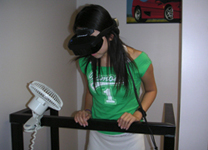This Anxiety Disorder Makes People Afraid of Vomit
http://www.health.com/anxiety/emetophobia
Emetophobia is very real—and can make life extremely challenging.
For as long as she can remember, Rachel has been afraid of vomit. And not just afraid in the way that everyone finds vomit unpleasant. She has a diagnosable fear of vomiting known as emetophobia.
“The first moment my parents and I really realized I had a more significant reaction than most people to vomit was when I was very young,” she says. “We were driving through a Christmas light show. The finale was a tunnel of flashing lights, and my little cousin was sick next to me in the car. I started panicking, and I even opened the car door while we were still driving in an attempt to get away from the situation as quickly as possible.”
Years of vomit anxiety followed, whether she was sick herself, saw someone else who was ill, or even saw vomit on the ground or on TV. “While some people might say, ‘ew, gross,’ but then move on with their lives, the scene replays in my head for a long time after,” she says.
Fear is totally normal, but a phobia—of vomit, flying, heights, snakes, and more—is problematic. “A phobia is a diagnosable disorder that impacts people’s lives negatively,” says clinical psychologist Brenda K. Wiederhold, PhD, MBA, president of the Virtual Reality Medical Center in California, where she treats people with anxiety disorders using VR.
To read the full article, please visit: http://www.health.com/anxiety/emetophobia
Contact Virtual Reality Medical Center at frontoffice@vrphobia.com to schedule an appointment.



